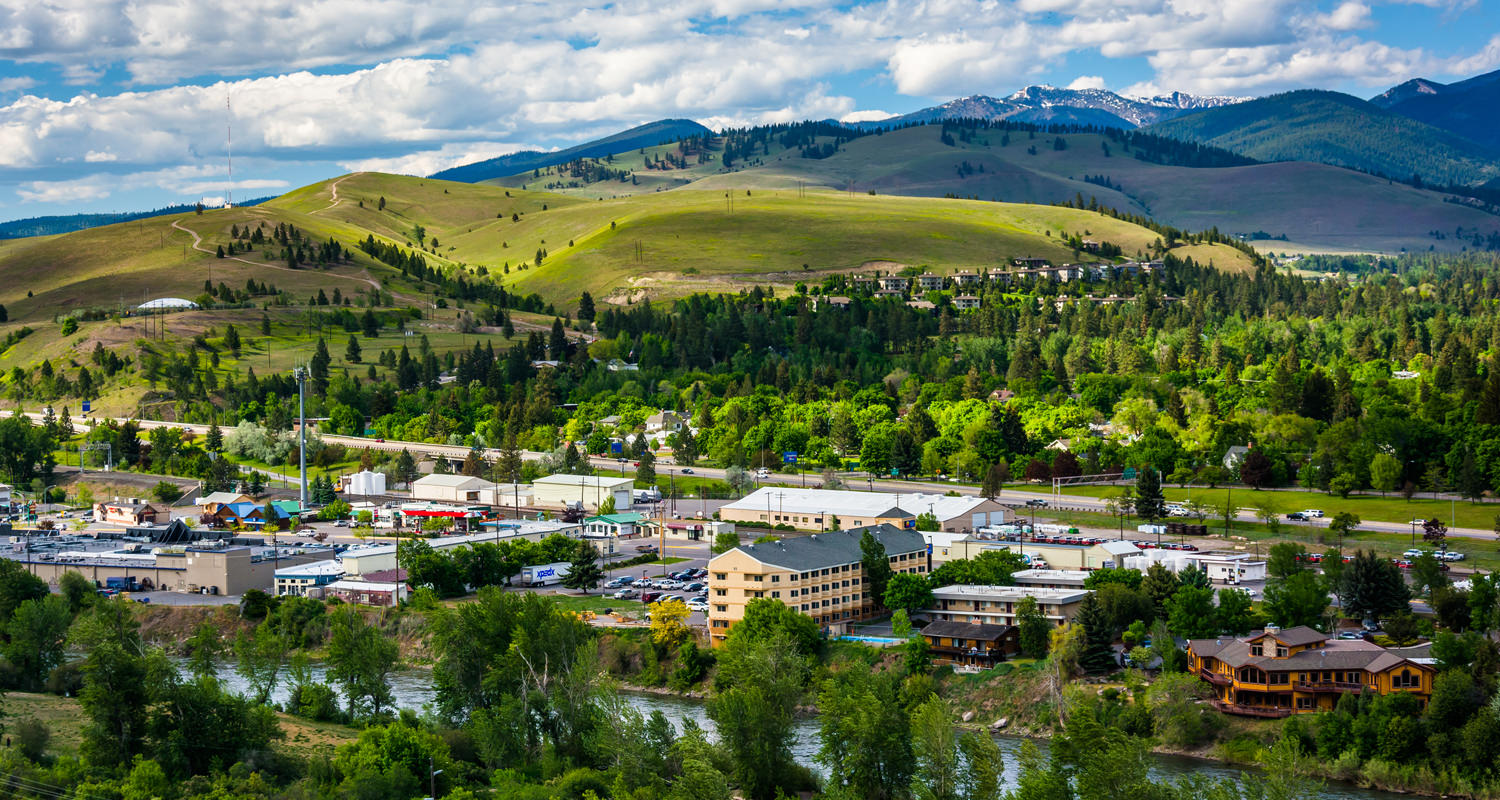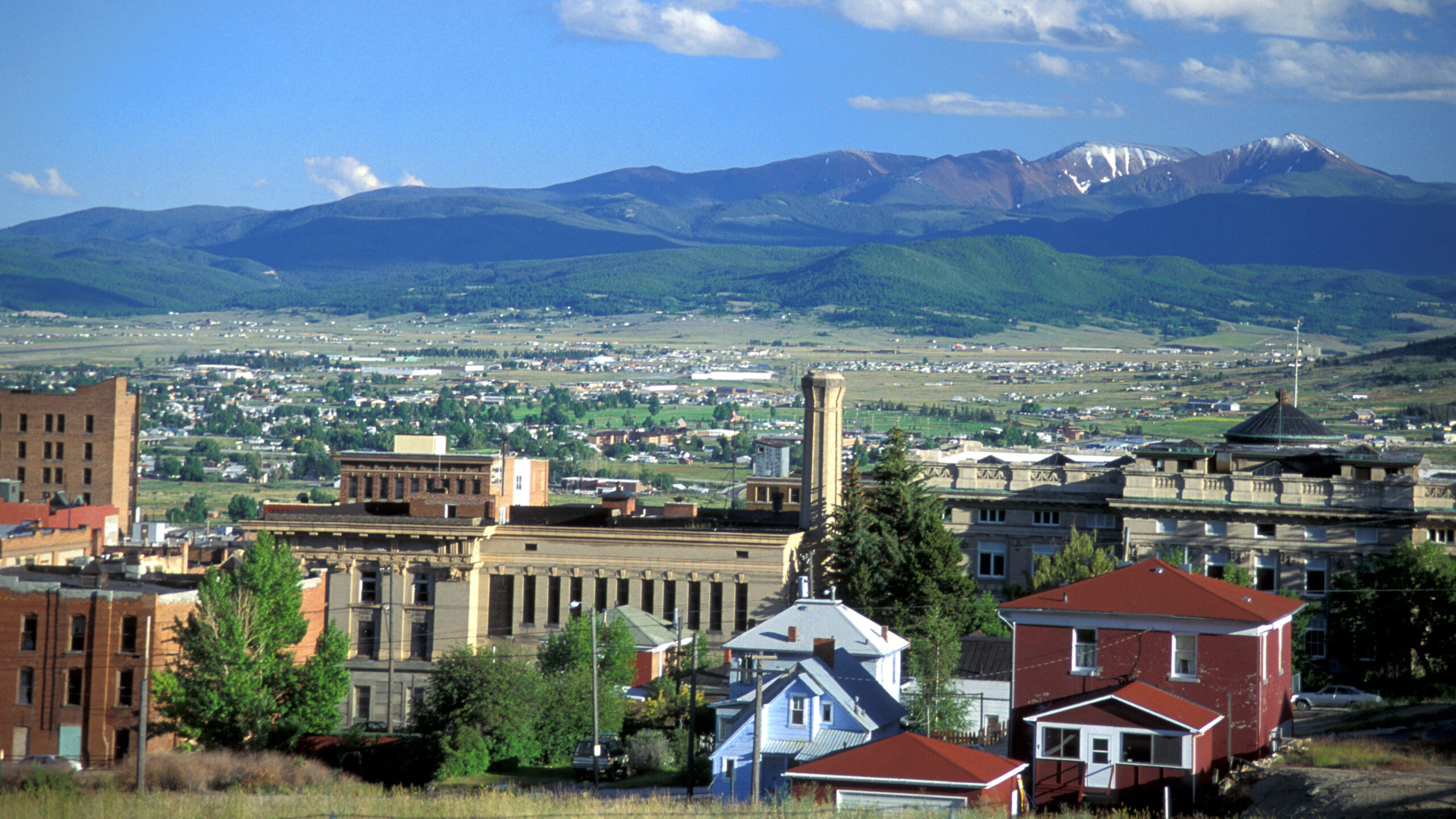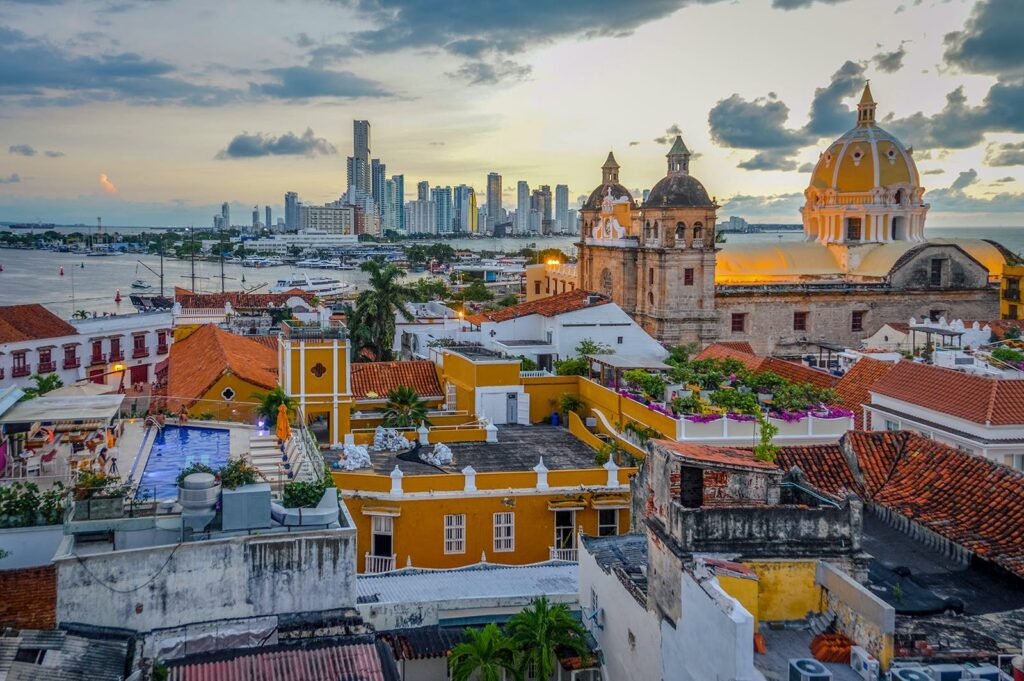City Rankings
Largest Cities by Population
The state of Montana has several large and significant cities that contribute to its rich cultural and economic landscape. When it comes to determining the largest cities in Montana, we look at their population sizes.
Largest Cities by Population
Here are the 10 largest cities in Montana based on their populations:
- Billings – With a population of over 110,000, Billings is the largest city in Montana and serves as the county seat of Yellowstone County.
- Missoula – Located along the Clark Fork River, Missoula has a population of more than 73,000 residents.
- Great Falls – The third-largest city in Montana, Great Falls boasts a population of over 60,000 people and is situated near the confluence of the Missouri and Sun rivers.
- Bozeman – This popular college town has a population of more than 45,000 residents, making it the fourth-largest city in Montana.
- Butte – Known for its rich mining history, Butte is home to over 34,000 people and serves as the county seat of Silver Bow County.
- Helena – The capital city of Montana has a population of more than 28,000 residents and is located in the foothills of the Rocky Mountains.
- Kalispell – Located near Glacier National Park, Kalispell is home to over 24,000 people and serves as the county seat of Flathead County.
- Havre – With a population of more than 9,600 residents, Havre is a significant city in northern Montana and serves as the county seat of Hill County.
- Anaconda – This historic mining town has a population of over 9,200 people and serves as the county seat of Deer Lodge County.
- 1 Miles City – Located in eastern Montana, Miles City is home to nearly 8,500 residents and serves as the county seat of Custer County.
The largest cities in Montana vary significantly in terms of their economic base, cultural attractions, and natural environments. However, all of these cities contribute to the state’s rich tapestry of urban and rural life.

Billings: Over 109,000 residents call Billings home, making it the largest city in Montana.
Billings is a thriving metropolis situated in the southeastern part of Montana, boasting a diverse and dynamic atmosphere that sets it apart from other cities in the state.
As the largest city in Montana, Billings serves as a hub for culture, education, healthcare, and economy, offering residents and visitors alike access to an array of exciting attractions and activities.
With a population surpassing 109,000 people, Billings provides a unique blend of small-town charm and big-city amenities, making it an attractive destination for those seeking a balanced lifestyle.
The city’s rich history is evident in its beautifully preserved architecture, which includes historic buildings from the early 20th century that now house boutique shops, restaurants, and galleries.
Billings has been recognized as one of the top cities to visit in Montana due to its stunning natural scenery, including the nearby Beartooth Mountains, Yellowstone River, and scenic hiking trails.
The city also boasts a thriving arts scene, with numerous museums, art galleries, and performance venues showcasing local and regional artists.
Billings is home to several renowned institutions of higher learning, including Montana State University Billings and the College of Technology.
The city has also invested heavily in its infrastructure, boasting state-of-the-art transportation systems, including a regional airport, public bus system, and extensive network of bike trails and pedestrian pathways.
In addition to its economic and cultural significance, Billings is renowned for its outdoor recreation opportunities, offering world-class hunting, fishing, hiking, skiing, and other activities that cater to enthusiasts of all skill levels.
As a leader in the Montana economy, Billings plays a pivotal role in driving growth, innovation, and entrepreneurship across the region, with numerous business incubators, co working spaces, and economic development initiatives.
Missoula: A thriving college town and hub for outdoor recreation, Missoula has a population of around 73,000.
- Missoula is one of the top cities to live in Montana and offers a unique blend of college town charm, outdoor recreation opportunities, and a thriving downtown area.
- The city has a population of around 73,000 people, making it the second-largest city in the state after Billings.
- Missoula is home to the University of Montana, which brings a lively atmosphere to the city with its sports teams, cultural events, and educational opportunities.
- Despite its small-town feel, Missoula has a lot to offer when it comes to outdoor recreation.
- The city is surrounded by beautiful mountains and rivers, making it an ideal base for hiking, skiing, fishing, and other outdoor activities.
Some popular outdoor spots in the area include:
- Rattlesnake National Recreation Area
- Bitterroot Valley
- Missoula County Fairgrounds
Missoula has a strong sense of community, with a downtown area that is full of unique shops, restaurants, and cultural attractions.
The city hosts several festivals throughout the year, including:
- Missoula Folk Festival
- Missoula Children’s Theatre
- Big Sky Documentary Film Festival
Overall, Missoula is a thriving college town and hub for outdoor recreation that offers something for everyone.
Population Growth
Trends and Statistics
The population growth rate of cities in Montana has been a topic of interest for researchers and policymakers alike. With a growing population, urbanization, and demographic shifts, it’s essential to analyze trends and statistics that impact population dynamics.
According to the United States Census Bureau (2020), Montana’s total population is approximately 1.06 million residents, with an average annual growth rate of about 2.5% since 201 Breaking down this growth by urban areas:
- Billings: The largest city in Montana, with a population of around 109,000 residents (2020 estimate), has experienced steady growth at an average rate of 2.1% per annum.
- Missoula: With approximately 73,000 residents (2020 estimate), Missoula’s population growth has averaged about 3.4% annually.
- Great Falls: The third-largest city in Montana, with a population of around 60,000 residents (2020 estimate), has seen average annual growth of 2.6%.
- Bozeman: Home to Montana State University, Bozeman’s population has grown rapidly at an average rate of 5.3% per annum, reaching approximately 45,000 residents (2020 estimate).
- Billings, Missoula, and Great Falls are followed by Butte, Helena, Kalispell, Havre, and Miles City.
Age demographics play a significant role in population growth. In Montana:
- The median age is approximately 38 years (2020 estimate), with the largest age group being between 25-34 years old.
- About 26% of the state’s population belongs to the younger demographic (under 25 years). This is lower than the national average, indicating an aging population trend in Montana.
Population growth and changes can impact housing market trends:
- Rapid growth rates, especially in areas like Bozeman and Missoula, contribute to increasing demand for housing, pushing prices upwards.
- With the influx of new residents comes a higher need for infrastructure development, such as transportation systems and public services.
Urbanization patterns indicate shifts toward cities with a strong education sector:
- Bozeman’s growth can be attributed to its university presence and subsequent job opportunities in research and academia.
- Missoula has seen significant investment in downtown revitalization, with the opening of new restaurants, shops, and entertainment venues catering to students and young professionals.
The overall trends suggest a mix of stable growth rates among Montana’s largest cities, punctuated by rapidly increasing populations in areas driven by higher education institutions. Understanding these patterns is essential for informed development strategies and resource allocation, ensuring the state can effectively meet its growing population needs.
According to the University of Montana’s Bureau of Business and Economic Research, Billings is expected to experience moderate growth through 2025.
The population growth of cities in Montana, specifically Billings, is a topic of interest for economic and demographic researchers.
According to various sources, including the University of Montana’s Bureau of Business and Economic Research, Billings is expected to experience moderate growth through 2025.
This growth is attributed to several factors, including its location as the largest city in Montana, access to interstate highways, and a strong economy driven by industries such as healthcare, education, and manufacturing.
Some of the key indicators that suggest Billings will continue to grow include:
- The presence of new businesses and developments in the downtown area, such as the historic downtown revitalization project.
- The expansion of Montana State University-Billings, which is expected to increase enrollment and attract more students and faculty to the city.
- The growth of healthcare services, including a new hospital and medical center that will provide jobs and attract patients from surrounding areas.
- The development of industrial parks and commercial properties along the Interstate 90 corridor, which is expected to attract new businesses and industries to the area.
Overall, the growth of Billings is expected to be steady and moderate, driven by a combination of economic, demographic, and geographic factors.
The same source notes that Missoula will continue to grow steadily due to its strong educational institutions and vibrant economy.
The population growth in Montana’s cities is a topic of interest for anyone considering moving to the state. The same source notes that Missoula will continue to grow steadily due to its strong educational institutions and vibrant economy.
One of the main drivers of population growth is the need for education and employment opportunities. In the case of Missoula, the presence of the University of Montana provides a steady influx of students, faculty, and staff, contributing significantly to the city’s population growth.
The article highlights that the top 10 largest cities in Montana are: Billings, Missoula, Great Falls, Bozeman, Butte, Helena, Kalispell, Havre, Anaconda, and Miles City.
Missoula stands out as one of the fastest-growing cities in the state due to its unique blend of education, economy, and natural beauty. The city is home to the University of Montana and several other colleges and universities, making it a hub for higher education in the region.
The strong educational institutions in Missoula attract students from all over the world, contributing significantly to the city’s population growth. The presence of these institutions also leads to a highly skilled workforce, which is essential for attracting businesses and industries that create jobs and stimulate economic growth.
Some of the key statistics on population growth in Montana’s cities are as follows:
- Billings: With a population of approximately 109,000, Billings is the largest city in Montana.
- Missoula: Missoula has a growing population of around 73,000 people and is one of the fastest-growing cities in the state.
- Great Falls: Great Falls has a population of approximately 59,000 people and is known for its outdoor recreation opportunities and scenic beauty.
- Bozeman: Bozeman is home to Montana State University and has a growing population of around 45,000 people. The city is known for its vibrant downtown area and high standard of living.
In summary, the population growth in Montana’s cities, particularly Missoula, is driven by strong educational institutions, a vibrant economy, and natural beauty. As the state continues to grow and develop, it is likely that these cities will continue to attract new residents and businesses, leading to further population growth.
Economic Development
Key Industries and Trends
Economic development plays a crucial role in shaping the growth and prosperity of cities, and in the case of Montana’s largest cities, it is no exception.
Montana’s economy has historically been driven by its natural resources, including agriculture, mining, and timber production. However, over the years, the state has diversified its economy to include various other sectors that contribute significantly to its GDP.
The 10 largest cities in Montana offer a glimpse into the state’s economic landscape, with each city showcasing unique characteristics and industry trends.
Key Industries:
- Agriculture: The fertile valleys of Montana make it an ideal place for farming and ranching. The state is a major producer of hay, oats, barley, wheat, sugar beets, and alfalfa.
- Tourism: With its breathtaking natural beauty, including mountains, rivers, and lakes, Montana attracts millions of tourists each year, contributing significantly to the state’s economy.
- Technology and Healthcare: Cities like Missoula and Great Falls are hubs for technological innovation and healthcare services, with a presence of major hospitals and medical research centers.
Trends:
- Sustainability: With an increasing focus on environmental sustainability, Montana’s cities are shifting towards renewable energy sources, such as wind power and solar energy, to reduce their carbon footprint.
- Diversification of Economy: The state is actively promoting entrepreneurship and innovation, encouraging small businesses and startups to diversify its economy beyond traditional sectors like agriculture and natural resources.
- Tourism Development: Montana’s tourism industry continues to grow, with a focus on developing sustainable tourism practices that showcase the state’s unique culture and natural beauty.
Overall, the 10 largest cities in Montana represent a diverse economic landscape, with each city contributing uniquely to the state’s GDP. By understanding these key industries and trends, policymakers can make informed decisions to promote economic growth and development in the region.
Missoula’s economy is driven by education, healthcare, and tourism, with major employers including the University of Montana and Providence St. Patrick Hospital.
Missoula’s economy has experienced significant growth and diversification, driven by various sectors that contribute to its prosperity.
Education plays a pivotal role in Missoula’s economic landscape, with the University of Montana being one of the city’s major employers and a leading institution for higher learning in the region.
The university contributes to the local economy through faculty and staff employment, student enrollment, and research activities that often partner with private sector businesses.
Healthcare is another significant sector in Missoula’s economy, with Providence St. Patrick Hospital serving as a major employer and a key provider of healthcare services for the community.
The hospital’s presence not only provides employment opportunities but also contributes to the local economy through medical research, education, and innovation.
Tourism is another important sector in Missoula’s economy, with visitors drawn to the city’s natural beauty, outdoor recreation opportunities, and cultural attractions.
The city’s location near Glacier National Park and the scenic Bitterroot Mountains makes it an attractive destination for tourists looking to explore Montana’s great outdoors.
Additionally, Missoula hosts several festivals and events throughout the year, including the Missoula County Fair, the Big Sky Documentary Film Festival, and the Festival of the Arts, which bring visitors to the city and contribute to its economic growth.
The combination of these sectors creates a diverse and resilient economy that has allowed Missoula to thrive and maintain a high quality of life for its residents.
Billings boasts a more diversified economy, with key industries including energy production, healthcare, and manufacturing.
The economic development in Billings, Montana is a crucial aspect that has contributed significantly to its growth and diversification. With a diverse range of key industries, Billings offers numerous opportunities for businesses to thrive.
One of the primary drivers of Billings’ economy is energy production. The city is strategically located near several major oil fields and pipelines, making it an ideal hub for the energy industry. Companies involved in drilling, refining, and transportation of fossil fuels have a substantial presence in Billings, generating significant revenue and job opportunities.
Another crucial sector in Billings’ economy is healthcare. The city has a high-quality hospital system, including St. Vincent Healthcare, which offers a wide range of medical services to the residents of Montana. In addition to providing quality care, the healthcare industry also generates substantial economic activity through employment and spending on medical supplies.
Manufacturing is yet another important sector driving Billings’ economy. The city has seen significant investment in manufacturing facilities, particularly in the areas of machinery, automotive parts, and electronics. Companies involved in these sectors have established a strong presence in Billings, taking advantage of the city’s favorable business climate and access to resources.
The economic diversification in Billings is further reinforced by its well-developed infrastructure, which includes two major airports, an interstate highway system, and access to the Yellowstone River. This infrastructure supports the movement of goods, people, and services across the region, contributing to the city’s overall economic resilience.
Overall, the unique combination of energy production, healthcare, manufacturing, and diversified industries has made Billings a thriving urban center with a strong economy that is less reliant on a single sector. This diversification positions the city for long-term growth and stability in an ever-changing economic landscape.
The benefits of this diverse economy are numerous, including higher employment rates, increased tax revenues, and greater opportunities for residents to secure well-paying jobs. Moreover, Billings’ diversified economy also contributes positively to the region’s overall economic vitality, fostering a positive business environment that encourages entrepreneurship and innovation.
- 14 Prettiest Towns In Wyoming - September 3, 2024
- Countries That Start With The Letter V - September 3, 2024
- Countries That Start With The Letter K - September 3, 2024




